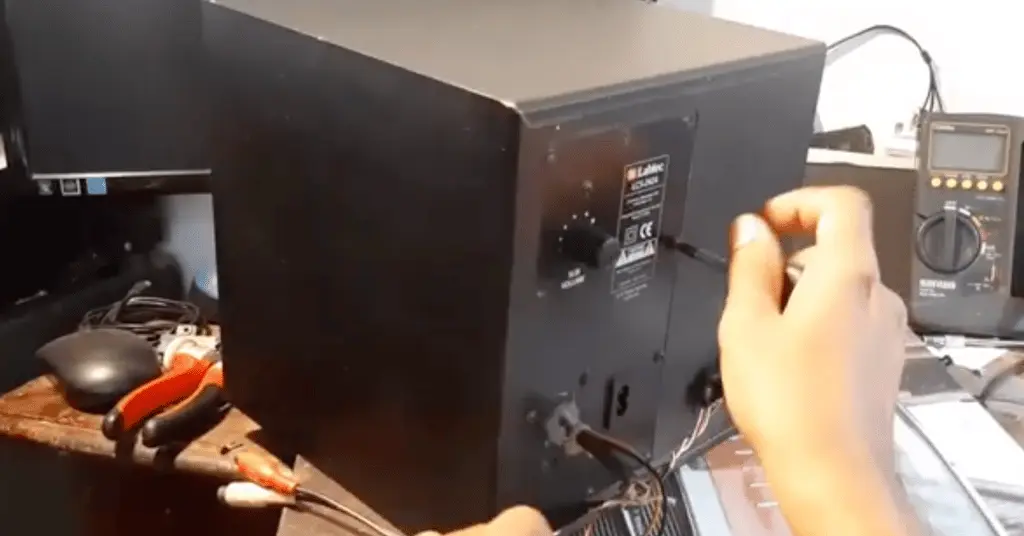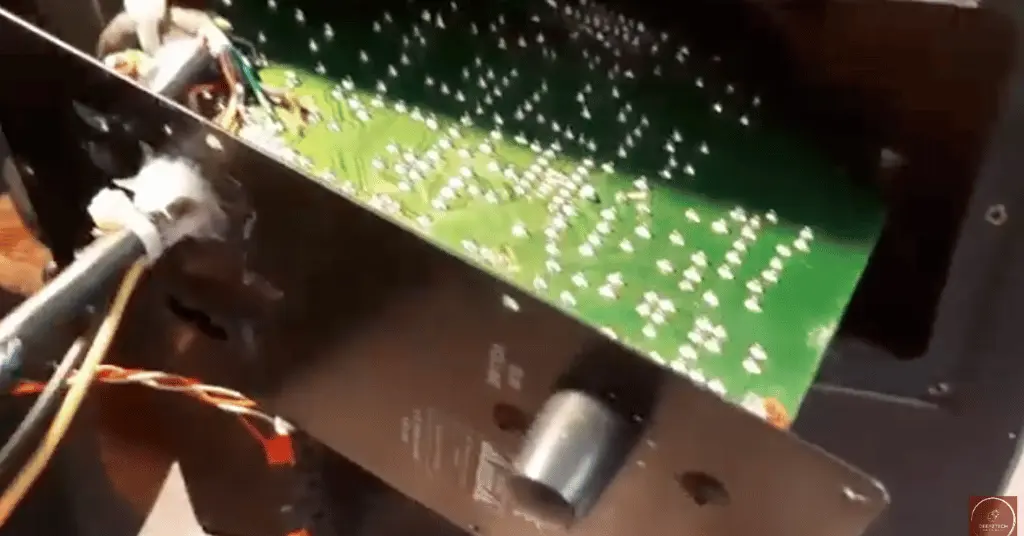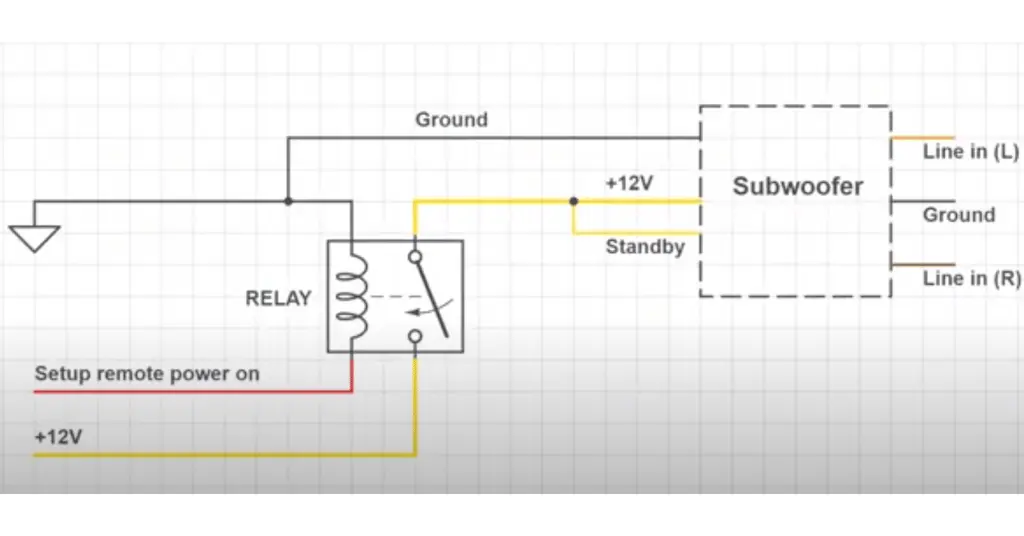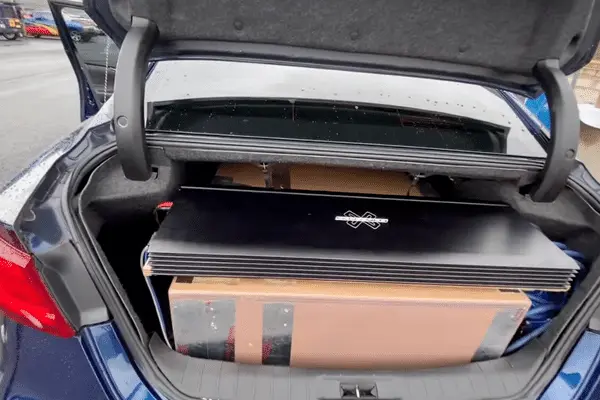How to Install a Home Theater Subwoofer in a Car?

As an audio expert, I’ve been frequently asked if one can install a home subwoofer in his/her car audio system. However, installing a home theater subwoofer in your car can be an exciting way to enhance your audio system while saving you tons of money.
You just need the right tools and preparation, and KABOOM, you will be able to install a home theater subwoofer in your car! In this guide, I will walk you through all the steps involved so you can start building your perfect audio setup. Let’s get started!
Can You Convert a Home Theater Subwoofer Into a Car Audio Subwoofer?
Yes, it is possible to convert a home theatre subwoofer into a car subwoofer. However, there are some necessary modifications that you must perform to your home theater subwoofer so that it can run in your car stereo system.
Home subwoofers take 120 AC volts to work, while the car subwoofers take 12V DC. Here, you just need to convert the home theater subwoofer AC 120 volts into 12 DV volts so the car battery can run it.
Additionally, you should also consider mounting requirements (if any) and soundproofing considerations before starting a project like this.
Home Subwoofer vs. Car Subwoofer:
Before we dive into the installation process, I want to read the whole difference between the home and the car subwoofer. Reading the table below will help you in a solid decision:
| Function | Home Subwoofer | Car Subwoofer |
|---|---|---|
| Purpose | Enhance low-frequency audio for home theater systems | Enhance low-frequency audio for car audio systems |
| Design | Larger and bulkier, often built into furniture or cabinets | Smaller and compact, designed for installation in vehicles |
| Power Requirements | Typically powered by AC electricity | Powered by the car’s electrical system (DC power) |
| Enclosure | Sealed or ported enclosure options available | Sealed enclosure is common due to limited space in a car |
| Installation | Placed on the floor or mounted on walls | Installed in a specific location within the car’s interior |
| Sound Performance | Designed for room-filling bass | Optimized for providing impactful bass in a car |
| Frequency Response | Wide range of frequency response capabilities | Focused on producing deep low-frequency sounds |
| Adjustability | Often equipped with adjustable controls and settings | Limited adjustment options due to space constraints |
| Mobility | Not easily portable due to size and weight | Portable and can be transferred between vehicles |
| Compatibility With Car | Requires modifications and adaptations for car use | Designed specifically for car audio systems |
Steps to Install a Home Theater Subwoofer in Car:
Now that you have prepared your mind to install the home sub in your car. Follow the below steps carefully for a successful installation:
1. Gather the Necessary Tools and Equipment:
Before you begin the process, let’s confirm you have the following tools:
- Home theater subwoofer
- A compatible external car amplifier
- Screwdriver
- Crimping tool
- Multimeter (For testing purposes)
- Electrical tape
- Wiring connectors
- Panel removal tools
- Mounting brackets or straps
2. Convert the Home Theater Subwoofer Into a Car Subwoofer:

I hope you have all the necessary tools. Now let’s start with converting your home theater subwoofer to work in the car. For that, you’ll need to follow the below steps:
2.1 Remove the Driver From Home Subwoofer Box:
Start by disconnecting the power and removing the cover of the enclosure. Then, unscrew any screws that attach the subwoofer driver to the mounting plate. Once you remove all the screws, gently pull on either side of the driver to separate it from its frame.
Finally, carefully extract each wire connected to it and discard or store it accordingly. Please handle this carefully, as any damage can result in reduced sound quality or malfunction.
2.2 Remove the Built-in Amplifier or Wiring Assembly:

Once you remove the subwoofer from the home sub enclosure, look carefully at the wiring system. Once analyzed, detach the amplifier or any wiring assembly that makes the subwoofer work on 120 AC volts.
Next, unplug and unscrew all associated components, such as terminals, crossovers, filters, or equalizers. Without the built-in amp, your subwoofer will work as a passive one. Passive subwoofers require a separate amplifier for proper working.

2.3 Mount Your Subwoofer Back to the Box:
Once unnecessary components have been removed from the home theater subwoofer enclosure, connect the speaker wires (blue and red wire) with your subwoofer’s terminals and drive the wires inside-out from the chamber’s back.
Now, place the subwoofer in the cutout area (It would be good to apply some sealant on the cutout area before putting the subwoofer driver). Once done, secure with screws or bolts as necessary for mounting.
2.4 Choose the Compatible External Amplifier for Your Subwoofer:
Now, it’s time to choose the external amp for your home subwoofer. It is essential to consider the power requirements of the subwoofer.
You should go for a car amplifier that can provide enough power to accurately reproduce the low-frequency sounds of your subwoofer without clipping or distortion.
Ensure the car amplifier has high-level inputs and outputs to connect it to your home subwoofer. It’s also essential to choose an amp with reliable protection circuitry in case of any overloading due to sudden bass transients or other issues.
3. Choose the Right Location for the Subwoofer:
Ideally, you should place the car subwoofer along the rear wall of the trunk (that’s my favorite position). This will help ensure all sounds are balanced and produce a bass-rich output.
Additionally, ensure that you have enough insulation between yourself and the speaker to reduce noise interference while driving.
4. Prepare the Car Interior for Installation:
Remove any excess items from that area once you have chosen a suitable location. This includes any debris or objects that may be blocking access to the site. You should clean the area thoroughly once all excess materials have been removed.
Vacuum up dust and dirt, and wipe down surfaces with a damp cloth to remove any grime that may interfere with the installation.
However, if there are bumps or irregularities in the area where you want to mount the home sub, use a foam insulation product to even out the surface and ensure a secure fit for the car subwoofer.
5. Install the Subwoofer Enclosure:

I definitely recommend this step as it will prevent your subwoofer from sliding while playing heavy bass sounds. In this step, you must drill holes for mounting plates and secure the box with screws.
Start by carefully tracing around the outline of each corner of your enclosure onto each side of the trunk. You can use a power drill or screwdriver to make pilot holes through both sides of the trunk before securing your subwoofer enclosure on the mounting brackets with screws. Finally, seal any exposed materials for weatherproofing purposes if needed.
6. Connect Your Home Subwoofer to the Car Audio System:
Now this is the most crucial step, as it will decide whether your subwoofer will work or not correctly. Follow the below steps carefully:
- First, you should identify the high-level input terminals on your car amplifier. These are typically labeled “speaker-level inputs” or “high-level inputs.”
- Now, run the length of the speaker wire from the positive (+) and negative (-) output terminals on your car stereo’s head unit to the high-level input terminals on the stereo amplifier. This will provide the audio signal from the stereo head unit to the car amplifier.
- Now, do the same for the subwoofer! You must connect the positive (+) and negative (-) speaker wires from the subwoofer terminals to the corresponding terminals of the car amplifier’s output. Ensure you have made the proper connection by double-checking.
7. Test and Fine-Tune the Subwoofer:
This step involves testing and fine-tuning the subwoofer. Once you have done all the above steps, you should start playing the music at a low volume level to check for any rattling or other sound errors.
If everything seems fine to you, gradually increase the volume. If anything seems unusual to you, you can fine-tune the subwoofer. You can head toward the HPF and LPF settings on the head unit. You can also use the multimeter for gain optimization.
General FAQs
Can You Use a Car Audio Subwoofer in a Home?
Yes, car subwoofers can be used in a home audio setup. The main difference is that car subwoofers usually have higher power ratings and are designed to fit specific spaces within the car. However, it is also essential to consider the frequency response of a car subwoofer when using it at home.
What Is the Major Difference Between Car Audio Subwoofer and Home Subwoofer?
The significant difference between car subwoofers and home subwoofers is that car stereo subwoofers are made to function in a much smaller space and are designed to withstand the vibrations of a bumpy road.
Can I Revert the Converted Subwoofer Back to Its Original Home Theater Setup?
Yes, you can revert the converted subwoofer back to its original home stereo setup. To do so, simply undo any modifications you may have made, reconnect it with the other speakers in your system, and set the volume levels accordingly.
